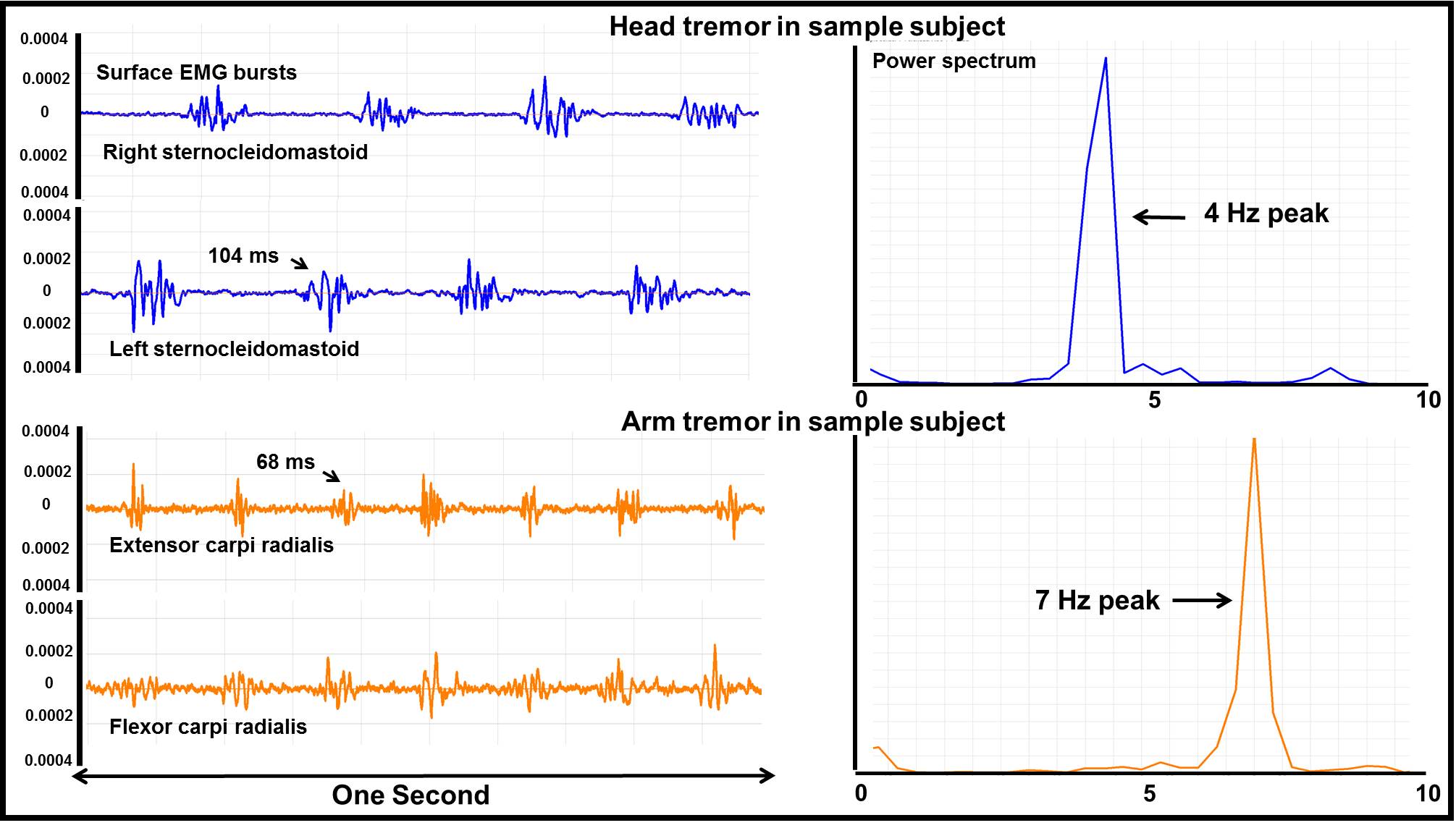Session Information
Date: Sunday, October 7, 2018
Session Title: Dystonia
Session Time: 1:45pm-3:15pm
Location: Hall 3FG
Objective: To determine the clinical and electrophysiological characteristics of tremor in dystonia.
Background: Tremor affects more than 50% of patients diagnosed with dystonia. Tremor involves either the same body part referred to as dystonic tremor or a different body part referred to as tremor associated with dystonia. There is scanty literature on the electrophysiological characteristics of these tremors.
Methods: Patients diagnosed with dystonia using the consensus criteria recommended by the Movement Disorders Society were prospectively enrolled over the last two months. Demographics, clinical characteristics, and EMG characteristics for frequency, EMG bursts duration and pattern of discharges in antagonistic muscles (Delsys surface EMG system) were recorded.
Results: 22 patients (5 men, 17 women, mean age 67.5 ± 14.5 years) were enrolled. All patients had a head tremor, age of onset was 49.1 ± 16.8 years; disease duration 18.2 ± 12.9 years. The head tremor had jerky character in 7/22 patients; 8 had severe head tremor; family history was positive in 6/22 patients, 21/22 reported marked improvement on botulinum toxin injections. The range for the frequency of head tremor was 3.5-7 Hz, duration of EMG burst was 67-155ms and all three patterns of EMG discharge were seen in antagonistic muscles (alternating, co-contraction and mixed). 9/22 had arm + head tremor, in 2 patients, arm tremor presented at a mean 20.5years before the onset of head tremor and in the remaining seven, arm tremor presented at a mean of 3 years after head tremor. Arm tremors were treated with botulinum toxin in only 5 patients and were partially responsive compared to head tremors. The frequency for postural arm tremor was distinct and different from head tremor in 6/9 patients (range 3-7 Hz), duration of EMG burst was 68-133ms and similar to head tremor all three patterns were seen.
Conclusions: In this ongoing study, we observed head tremors compared to arm tremors respond better to botulinum toxin. The head and arm tremor present with distinct frequencies, suggesting multiple oscillators are involved in the pathogenesis of these tremors. The tremors bursts in these patients do not show a distinct pattern and the duration of bursts are not necessarily long. Understanding the electrophysiological characteristics will guide better future targeted therapies.
To cite this abstract in AMA style:
Z. Jabarkheel, W. Hu, A. Ramirez-Zamora, I. Malaty, W. Deeb, M. Okun, A. Wagle Shukla. Tremor in dystonia: Clinical and electrophysiological assessment in a large series [abstract]. Mov Disord. 2018; 33 (suppl 2). https://www.mdsabstracts.org/abstract/tremor-in-dystonia-clinical-and-electrophysiological-assessment-in-a-large-series/. Accessed December 30, 2025.« Back to 2018 International Congress
MDS Abstracts - https://www.mdsabstracts.org/abstract/tremor-in-dystonia-clinical-and-electrophysiological-assessment-in-a-large-series/

